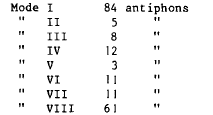Article contents
The Lambeth and Caius Choirbooks
Published online by Cambridge University Press: 14 July 2009
Extract
The Lambeth and Caius Choirbooks (London, Lambeth Palace Library, ms.1; Cambridge, Gonville and Caius College, ms.667/760 [since 1947 deposited in the University Library, Cambridge]) are two of the most important sources of music by composers of the generations of Fayrfax and Ludford. Their importance is heightened by the fact that, of the scores of such choirbooks that must once have existed in England, only one other, the famous Eton Choirbook (Eton College, ms.178.), survives in anything remotely like a complete state.
- Type
- Research Article
- Information
- Copyright
- © The Plainsong and Medieval Music Society 1983
References
Notes
[1] E.g. Frere, W.H.: Bibliotheca Musico-Liturgica, vol.1 (London, 1901), p.4 Google Scholar; and Baillie, Hugh: ‘Nicholas Ludford (c.1485–c.1557)”, The Musical Quarterly, 44 (1958), pp.197–8Google Scholar.
[2] A fuller description of the Lambeth Choirbook may be found in my unpublished M.A. dissertation: The Unpublished Antiphons in the Lambeth Choirbook: An Introduction, Source Study, Edition and Commentary (University of Exeter, 1978)Google Scholar. A short description of the Caius Choirbook by Bowers, Roger is given in Cambridge Music Manuscripts 900–1700, ed. Fenlon, I. (Cambridge, 1982), pp. 126–8Google Scholar. This appeared during the course of publication of the present article.
[3] Chew, Geoffrey: ‘The provenance and date of the Caius and Lambeth choirbooks’, Music & Letters 51 (1970), pp. 107–117 CrossRefGoogle Scholar.
[4] All known biographical information about Higgons is given in Emden, A.B.: A Biographical Register of the University of Oxford to A.D.1500, vol.2 (Oxford, 1958), p.932 Google Scholar.
[5] I am indebted to Dr. Roger Bowers for originally proposing this idea, which is included in his entry on the Caius Choirbook cited in footnote 2. He also pointed out to me the lack of records about the canonries of many collegiate churches.
[6] Letters and Papers, Foreign and Domestic, of the Reign of Henry VIII (London, 1867–1910), vol.3, part 2, p.1004 Google Scholar.
[7] Ibid., vol.1, part 2, p.932.
[8] Le Neve, John: Fasti Ecclesiae Anglicanae, 1300–1541 (revised in 12 volumes, London, 1962–1967), vol.3, pp.26, 40, 46 and 74 Google Scholar.
[9] Ibid., vol.7, p.20.
[10] Ibid., vol.1, p.47.
[11] Not merely two as implied by Bray, Roger: ‘16th-century musica ficta: the importance of the scribe’, Journal of the Plainsong & Mediaeval Music Society, 1 (1978), p.60 CrossRefGoogle Scholar.
Sectional compilation of music manuscripts was not uncommon. An excellent example is a pair of partbooks surviving at Cambridge (University Library Dd.13.27 [Contratenor], and St.John's College K.31 [Bassus]), which contain eleven votive antiphons followed by five masses. The bipartite nature is emphasized by the fact that in both manuscripts the masses begin a new gathering, preceded by two blank folios in the Bassus book. The gradual deterioration of the writing in both sections implies that the scribe worked on both concurrently.
[12] E.g. Caius p.123, line 2: magni; p.130, line 8, meo; Lambeth f.1r, line 4, voluntatis; f.39r, last line, eius.
[13] E.g. Caius p.103, line 7, secund-um, where the ascending tail of a semiminim comes after the d; Lambeth f.4r, line 5, su-b, where the descending tail of a long comes after the u; and f.56v, line 1, l-au-dat, where the ascending tails of semiminims come after the l and the u and the second a is placed slightly higher than the other letters to avoid another tail.
[14] Bowers, op.cit. (note 2), also concludes that the manuscripts were copied in a professional atelier.
[15] As well as those already mentioned, London, British Library, Add.30520 (a single bifolium from an early 16th century choirbook), Royal 11.E.xi (a small choirbook dated 1516 containing motets in continental style), Royal 8.G.vii (a choirbook of continental motets, in small format, dateable to the third decade of the 16th century), Add.34191 (a bass partbook from the reign of Henry VIII), Harley 1709 (a mean partbook from the reign of Henry VIII); Cambridge, University Library, Nn.6.46 (a slim presentation choirbook from the reign of Henry VIII, containing the Mass O quam suavis).
[16] Chew, op.cit. (note 3), p. 113.
[17] Bray, op.cit. (note 11), pp.60–64.
[18] It is dangerous to be dogmatic about what may be added accidentals: the slightly cramped appearance of some is more likely to be the result of the scribe's writing the note first, then its accidental, not always having left enough space for the latter. Bray's suggestion that Fayrfax's Masses Regali and Tecum principium were new arrivals in London in the mid to late 1520's (the date he assigns to the manuscript) is untenable when Fayrfax was a leading Gentleman of the Chapel Royal before his death in 1521.
[19] Published in Bergsagel, John D.: Nicholas Ludford, Collected Works, vol.II, Corpus Mensurabilis Musicae, 27 Google Scholar. The passage in question occurs in the Contratenor part, p.179 of the edition, from the last beat of bar 118 to the end of bar 121. Although not clearly explained, the reading given is taken from the Caius Choirbook, except that the values of the first two written notes in bar 119 are reversed. The reading in the Caius book is:

The version in the Lambeth book is:

Obviously this will not fit with the other parts, producing consecutive octaves with the Medius part (at *), and an A against a B♭ chord (at +).
[20] Benham, Hugh also holds this view: Latin Church Music in England c.1460–1575 (London, 1977), p.22 Google Scholar.
[21] Bray, Roger: ‘More light on early Tudor pitch’, Early Music, 8 (1980), p.37 Google Scholar; Wulstan, David: ‘Vocal colour in English sixteenth-century polyphony’, Journal of the Plainsong & Mediaeval Music Society, 2 (1979), p.32 Google Scholar. Both fail to notice the superscription above Fayrfax's setting.
[22] Bowers, Roger: ‘Further thought on early Tudor pitch’, Early Music, 8 (1980), pp.368–371 CrossRefGoogle Scholar.
[23] Bowers, op.cit. (note 22), pp.371–2. In his entry on the Caius Choirbook cited in note 2, Bowers takes these “solmization instructions” as evidence that the manuscript was sung from regularly until the Reformation.
[24] Doe, Paul (ed.): Early Tudor Magnificats, Early English Church Music, 4 (London, 1964)Google Scholar; Harrison, Frank Llewelyn (ed.): The Eton Choirbook, vol.3, Musica Britannica, 12 (London, 1961)Google Scholar.
[25] I have compiled the following figures from Sarum Use. The number of magnificat antiphons in each mode for all double feasts and Sundays (the most likely days for the performance of a large-scale polyphonic setting) are:

Ferial antiphons also use the different modes with roughly the same frequency, although mode IV appears rather more often, and modes II and VII slightly more often.
Modes I and VIII are the most common, not modes VII and VIII as suggested by the faburdens used in magnificat settings. Moreover, of the 4 tone VIII faburden settings in Lambeth and 84 Caius, 2 use the G ending (Prentes and Cornysh) and 2 the C ending (Fayrfax Regali and Anon. I in Lambeth); yet of the 61 mode VIII antiphons, 59 require the G ending and only 2 the c ending. Clearly the use of a work as popular as Fayrfax's Regali (to judge from the number of sources it appears in) could not possibly have been restricted to just two occasions in the whole year.
[26] A full list of pictorial initials is given in Bowers, op.cit. (note 2).
[27] Chew, op.cit. (note 3), p.110.
[28] E.g., Chew, op.cit. (note 3), pp.108 and 111; and Bergsagel, John D.: ‘An introduction to Ludford (c.1485–c.1557)’, Musica Disciplina, 14 (1960), p.113 Google Scholar.
[29] I am again grateful to Dr.Roger Bowers for pointing this out to me.
[30] Flood, W.H.Grattan: Early Tudor Composers (London, 1925), p.116 Google Scholar.
[31] As Dr.Nicholas Sandon kindly pointed out to me, there is no contemporary evidence that Fayrfax ever worked at St.Albans, merely the testimony of Anthony à Wood (1632–95). It is unlikely that the leading Gentleman of the Chapel Royal could have held two such posts concurrently, especially at such a distance from London.
[32] Hugh Baillie, op.cit. (note 1), p.198; John D.Bergsagel: ‘An introduction to Ludford …’ (see note 28), p.113; Doe, Paul: ‘Latin polyphony under Henry VIII’, Proceedings of the Royal Musical Association, 95 (1968–1969), p.81 CrossRefGoogle Scholar.
[33] W.H.Frere, op.cit. (note 1), vol.II, p.126 (see Hughes, Anselm: ‘An introduction to Fayrfax’, Musica Disciplina, 6, 1952, p.91 Google Scholar); Ker, N.R.: Medieval Libraries of Great Britain (2nd edn., London, 1964), pp.116, 275, 330 and 340 Google Scholar.
[34] Chew, op.cit. (note 3), p.117.
[35] Baillie (see note 1), p.200–201, and Bergsagel (see note 23), p. 109.
- 2
- Cited by




